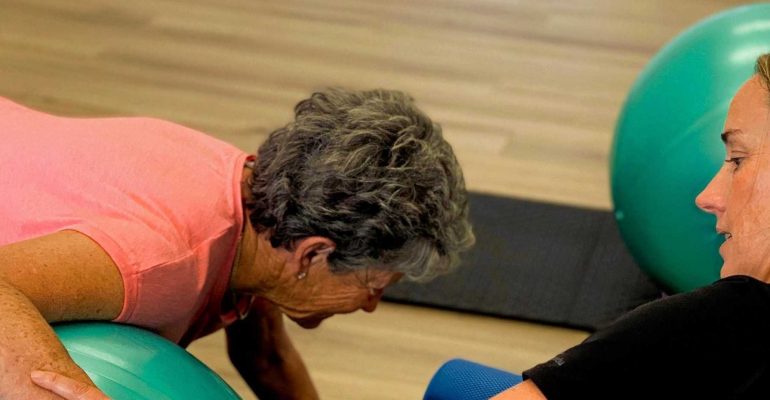Our NEW clinic at Erina is offering hope, strength, flexibility and mobility to cancer patients during and after treatment, regardless of how long ago it occurred.
That’s particularly good news for seniors who may be unaware of the huge potential benefits of exercise to recovery.
Specialist occupational therapist Kate Perkins opened the state-of- the-art Cancer Rehabilitation and Lymphatic Solutions clinic in August.
It comprises a dedicated exercise area and two treatment rooms.
“It’s not a clinical space and people breathe a sigh of relief when they come in because they’ve seen enough of doctors’ surgeries and hospitals,” Kate said.
Services include early monitoring and risk minimisation of cancer-related lymphedema, which is swelling of limbs most commonly caused by removal of, or damage to, lymph nodes.
“Lymphedema can become a life-long condition, but if it is detected early symptoms can be stopped or reduced,” Kate said.
The clinic also deals with management of fatigue, scar tissue which can restrict movement, and offers the internationally renowned Pinc and Steel Next Steps exercise class.
This combines Pilates, yoga and cardiovascular exercises, improving breathing techniques, posture and movement patterns.
It is specifically designed to rebuild strength, flexibility and stamina following cancer treatment.
“It’s essential that patients are educated about the importance of exercise in improving outcomes for any cancer treatment,” Kate said.
Exercise during and after treatment has been shown to help manage common side effects, improve treatment response and even reduce the risk of cancer returning, she said.
By maintaining mobility people were also able to continue more easily with their normal daily lives, thus increasing confidence, independence and overall quality of life.
Older patients often believed that rest was the best cure, Kate said.
Some had a fear of movement after chemotherapy and surgery.
However, the Clinical Oncology Society of Australia says that exercise should be prescribed to all cancer patients as a standard part of their cancer care.
Kate said it was frustrating that this still didn’t occur in every case, with some older breast cancer survivors “barely able to lift their arms because of scar tissue”, while other people struggled with the lack of flexibility to even put on the compression garments they required.
“You don’t have to put up with it – it’s never too late to start exercising and see some results,” she said.
An occupational therapist for six years, now specialising in cancer rehab and lymphedema, Kate said she had previously worked hands-on as a remedial massage therapist with cancer patients.
She said seniors were generally very proactive in exercising when they knew the possibilities, with one of her clients being a 94-year-old man who “has really embraced it and is very mobile”.
 “Seniors want to have the knowledge to be able to help themselves,” Kate said.
“Seniors want to have the knowledge to be able to help themselves,” Kate said.
“That’s why I love my job because of the turnaround I see – their energy levels increase, their confidence increases, and their movement and mobility.”
Info: lymphaticsolutions.com.au or phone (02) 4312 7033.
This article appears in the September 2019 issue of Central Coast Seniors News.

